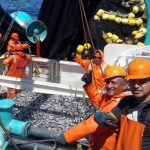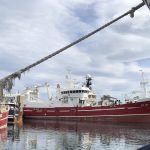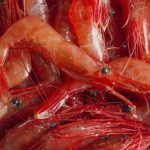Provisional figures published today by the Scottish Government indicate a four per cent increase in the value of fish catches landed by Scottish vessels in 2007.
The statistics show that 370 thousand tonnes of fish were caught by Scottish vessels last year with a value of £380 million.
Other main findings are detailed below.
Landings by Scottish based vessels:
- The value of shellfish landings increased by 16 per cent to £163 million and the volume increased by 13 per cent to 67 thousand tonnes.
- High value shellfish landings formed 18 per cent of the total by weight but 42 per cent by value, making shellfish the most valuable sector to the Scottish fleet.
- The value of demersal landings decreased by 4 per cent to £130 million and the volume of landings decreased by 5 per cent to 89 thousand tonnes.
- Demersal landings made up 34 per cent of the total value and 24 per cent of the total volume.
- The 2007 pelagic landings have been affected by the repayment arrangements agreed with the Commission for historic undeclared landings of herring and mackerel. Under administrative arrangements, repayment started in 2006 and continued into 2007.
- The volume of pelagic species landed decreased by 5 per cent to 213 thousand tonnes. Although prices per tonne landed increased, the value landed decreased by 1 per cent to £91 million.
- Pelagic landings made up 24 per cent of the total value and 58 per cent of the total volume.
Scottish Fishing Fleet:
- There were 2,191 active fishing vessels based in Scotland at the end of 2007, a net reduction of 33 (one per cent) since 2006.
- Since 2000, the number of over 10m vessels has decreased reflecting the impact of two decommissioning schemes in 2001 and 2003 which gave grants to owners in the Scottish whitefish fleet to decommission their vessel and surrender their fishing licence.
- The over 10 metres fleet decreased by 9 vessels (one per cent) in 2007 to 697. This segment is now 27 per cent smaller than in 2000, a trend which has affected the demersal (down 37 per cent), pelagic (down 42 per cent) and shellfish (down 14 per cent) sectors.
- The under 10 metre segment of the fleet decreased by 24 vessels (two per cent) to 1,494 over the year.
Employment
- The provisional employment figures indicate an increase in the number of fishermen of 4 per cent between 2006 to 2007 to reach 5,435.
Quota Uptake
- UK Quota uptake reached 90 per cent or more for four of the most important demersal stocks (NS Cod, NS Saithe, NS Plaice, NS Monks), just exceeding 100 percent for NS Plaice and NS Cod. Quota uptake was greater than 80 percent for WS Cod, NS Whiting, WS Monks and NS Nephrops, and greater than 70 percent for NS Haddock and WS Nephrops.
- Quota uptake for the four most important pelagic stocks continued to be high in 2007, approaching 100 percent for NS Herring, WS Herring and WS Mackerel and exceeding 90 percent for NS Mackerel.
Collection of data: The Scottish Government Marine Directorate’s sea fisheries database (the Fisheries Information Network – FIN) holds details of, among other things, all landings into Scotland and landings abroad by Scottish based vessels (ie vessels licensed at a Scottish port). Information on voyages – catches, gear, sea area fished etc – is supplied by skippers who are required under EU regulations to maintain logbooks. Data on landings – weight, presentation, price etc – is provided by fish sellers under similar EU legislation. The Scottish Fisheries Protection Authority port offices collate the information and enter it locally, and each night it is automatically transmitted to the FIN central server in Pentland House. There are details of about 80,000 voyages and over one million sale items recorded on the database each year. DEFRA maintains a similar system for landings into England, Wales & Northern Ireland, and by EWNI vessels landing abroad.
Value of landings: When the Register of Buyers and Sellers (RBS) was introduced in September 2005, Sales Notes were not initially required for sales of shellfish and information on the value of such landings is consequently missing for 2005. The value has therefore been estimated for a number of landings in 2005, mostly of shellfish, relating to voyages starting on or after September 1, 2005.








